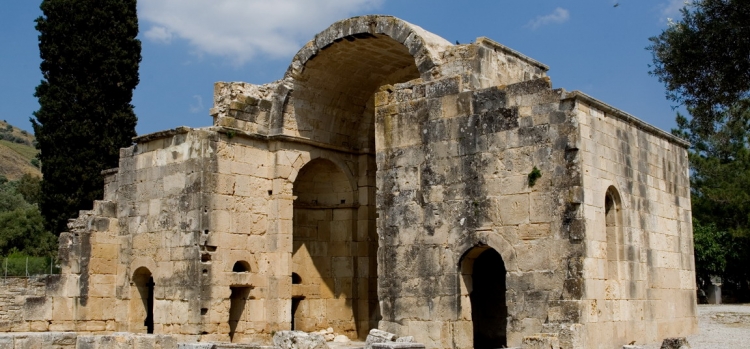Γόρτυνα
Gortys is located at the Messara Valley, near the village of Agioi Deka, on the 46th km of the main road from Iraklion to Tibaki that traverses the island from north to the south.
Gortys is crossed by the river Lithaios, today called Mitropolianos, that dominates the valley of Messara.
Gortys is crossed by the river Lithaios, today called Mitropolianos, that dominates the valley of Messara.
One of the oldest and most important monuments of Christianity in Crete is the Basilica of Agios Titos, which was the seat of the first bishops of the Cretan Church.
In the center of Gortys was the temple of Pythios Apollon, the most important pre-christianic temple of the city, built on the ruins of a Minoan settlement.
The most important monuments of the ancient Gortys are the ruins of the acropolis and the odeum. The odeum of the ancient city was the place where parts of the great Law Code of Gortys was discovered. The Gortys Law was inscribed on stones. Four series of inscribed stones are preserved today, which constitute relics of great importance for the study of the epigrafy and Law of the time. The inscription is in a Dorian dialect and it was written at the end of the 6th century B.C.
According to the myth, Zeus led Europe, after kidnapping her, to Gortys. The offsprings of this union were three sons, Minos, Sarpidon and Radamanthis.
Gortys was one of the oldest and strongest cities in Crete during the prehistoric and historic period. The population of ancient Gortys is believed to be 300.000 people. The Gortynians occypied Phaistos during the 3rd century B.C. During the Roman period reached the peak of its glory and it was the capital of Crete.
Gortys was the first city of Crete to accept Christianity, and maintained its glory until 828 A.D. when it was occupied and destroyed by the Saracens. Since then it was never inhabited again.
Κοινοποιήστε το άρθρο



